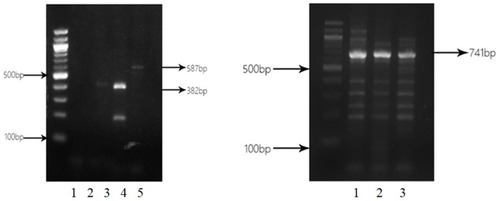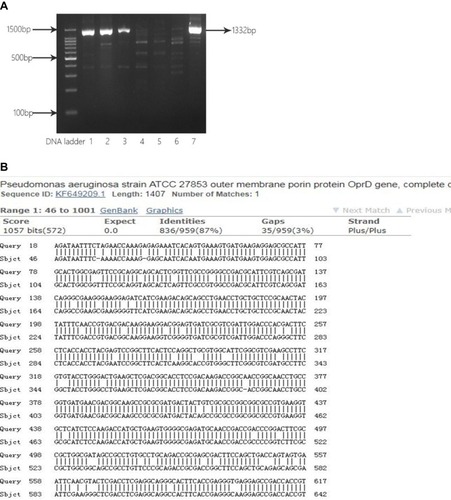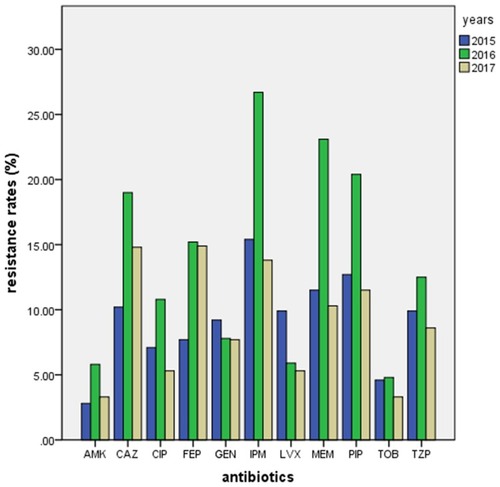Figures & data
Table 1 Primers Used in This Study
Table 2 Distribution of CRPA Isolates in Clinical Specimens
Table 3 Distribution of CRPA Isolates from Various Clinical Departments
Table 4 Drug Resistance Rates of P. aeruginosa Isolates from 2015 to 2017 (%)
Figure 2 IPM-EDTA disk synergy assay for P. aeruginosa standard strain ATCC27853 (left) and P. aeruginosa clinical strain MBL (+) (right). The arrows indicated test papers loaded with IPM or IPM+EDTA, respectively.

Figure 3 Electrophoresis of PCR products of blaIMP, blaVIM, and blaSIM. Left panel: lane 1. CRPA38 isolate without blagGIM PCR product (562 bp); lane 2: CRPA38 isolate without blaSPM PCR product (784 bp); lanes 3 and 4: CRPA38 and CRPA48 isolates with blaVIM PCR product (382 bp); lane 5: CRPA42 isolate with blaIMP PCR product (587 bp). Right panel: lane 1: CRPA30 isolate with blaSIM PCR product (741 bp); lane 2: CRPA35 isolate with blaSIM PCR product (741 bp); lane 3: CRPA36 isolate with blaSIM PCR product (741 bp).

Figure 4 Analysis of partial sequence of OprD2 gene from clinical isolates. (A) Electrophoresis of PCR products for OprD2. Lane 1, 2, 3 and 7: CRPA43, CRPA 52, CRPA 56 and. CRPA 60 isolates with OprD2 PCR products (1332 bp); Lane 4, 5, 6: CRPA01, CRPA02, and CRPA03 isolates without OprD2 PCR products (1332 bp). (B) BLAST of OprD2 PCR products against P. aeruginosa standard strain ATCC27853.



